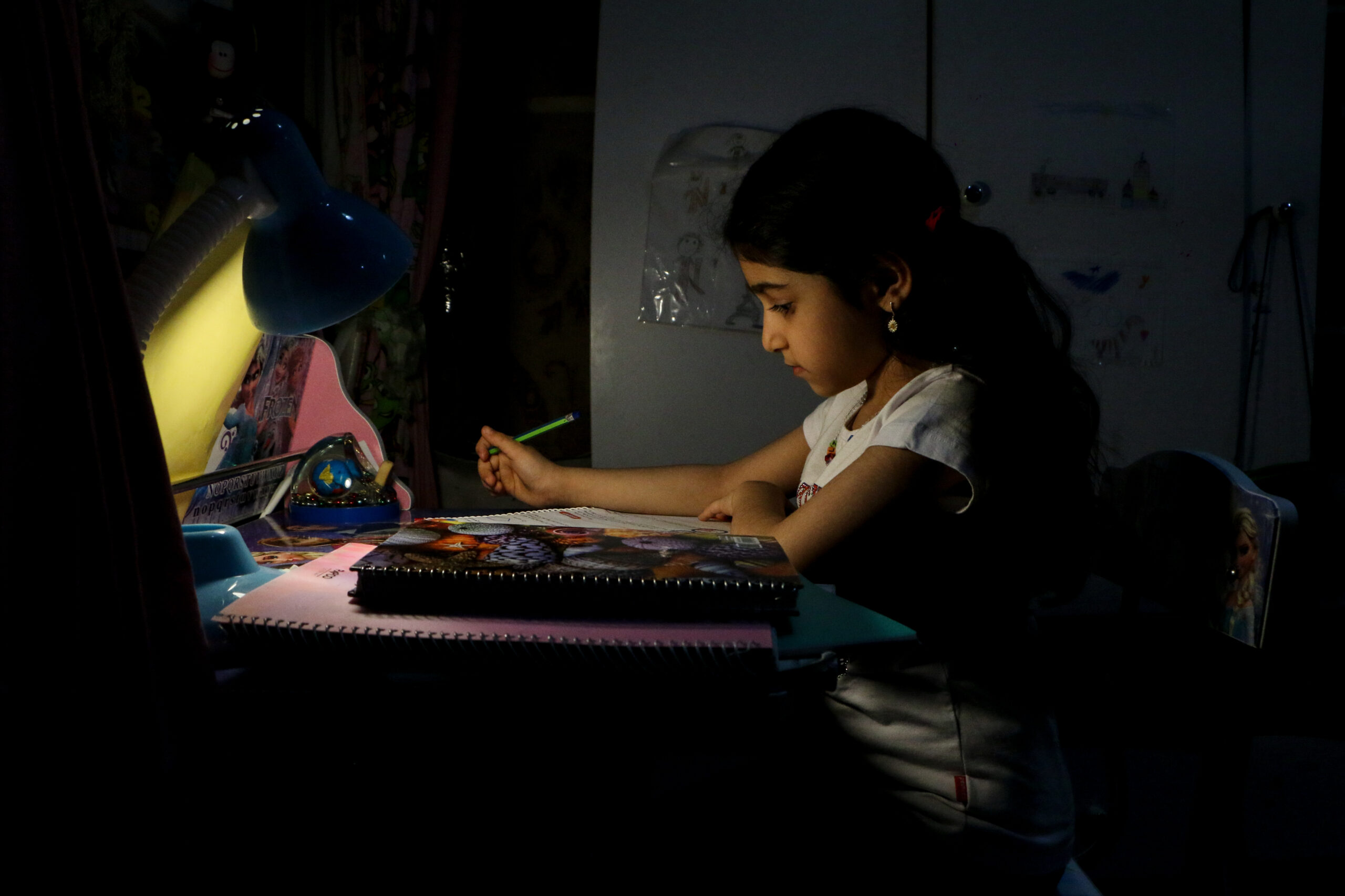
Disrupting Harm shows that in some countries up to 20% of children were victims of online sexual exploitation and abuse. This means that across 13 countries around 5+ million of internet-using 12-17 year olds experienced online sexual abuse in 2021 alone.
Disrupting Harm is a large-scale evidence generation investment for $15 million producing unique insights on how digital harms to children and young people are manifesting in 25 countries across 6 regions, and providing tailored roadmaps for key actors to act across levels.

Disrupting Harm started in early 2019, when Safe Online invested $7 million to develop a groundbreaking and innovative research project to better understand how digital technology facilitates the sexual exploitation and abuse of children.
Safe Online brought together and funded three global organisations – ECPAT International, INTERPOL and the UNICEF Office of Research – Innocenti – to undertake new research in 13 countries across Eastern and Southern Africa and Southeast Asia. The uniqueness of this research lies in its multisectoral approach, leveraging the expertise of these global agencies and their local partners. Furthermore, the methodology of Disrupting Harm enables countries to compare results, identify national differences and global similarities, and help policymakers and practitioners understand how this problem needs to be tackled in-country and internationally.
The findings from the first phase of Disrupting Harm, focusing on 13 countries in Southern and Eastern Africa and Southeast Asia, are out and provide important insights on digital harms, the gaps in existing systems at the country level and highlight key recommendations for governments and other stakeholders on tackling online CSEA. See detailed findings here
The success of the first phase of the project has led to a renewed $7 million commitment in 2022 and expansion in 12 countries across 4 regions leading to a total investment of $15 million across 25 countries.
The internet and wider digital world, while offering boundless opportunities, bring unprecedented risks and challenges, notably the horrific threat of online child exploitation and abuse.
Amid these challenges, the tangible lack of credible data and evidence on the issue makes it difficult to prevent and disrupt situations of online abuse and exploitation. There is an urgent need to build a more comprehensive understanding of the threats of online child sexual exploitation and abuse at national and regional levels.
Disrupting Harm was created to respond to this need. To prevent and respond to online child sexual exploitation and abuse, we must base our solutions on the latest data and evidence.
Disrupting Harm bridges the data gap, and emphasises the collective duty across governments, law enforcement, justice professionals, caregivers and tech companies. It adopts a comprehensive research approach, encompassing diverse voices, from law enforcement to survivors.
Armed with this knowledge, we’re better equipped to design proactive strategies against abuse. ‘Disrupting Harm’ underscores the message: In this digital era, protecting our children and young people is a shared responsibility, utilizing data and evidence to counter threats.
Disrupting Harm researchers have conducted national assessments based on nine distinct research activities in each country. Data was collected from government actors, law enforcement, children and their caregivers, and survivors of exploitation and abuse – all to create a fuller understanding of the threat of online child sexual exploitation and abuse. A detailed understanding of national response to the threat was captured through interviews and surveys with frontline service providers, and national duty-bearers on to gain a deep understanding of the legal and policy environment; Interviews with victims, their caregivers, and representatives from the justice sector to determine how the justice systems is supporting children; Survivor-centred conversations with young survivors to ensure their perspectives are understood and well incorporated; and statistics and other information from helpline and hotline operators and the industry.
Disrupting Harm’s methodology can be adapted to any country or region and enable cross-country comparisons and collaboration to tackle online child sexual exploitation and abuse.
Disrupting Harm’s findings offer key insights into online child abuse. It also allows comparisons between countries to spot common trends. Thanks to this project, we understand better how children experience online abuse, including details about reporting, law enforcement, and legislation.
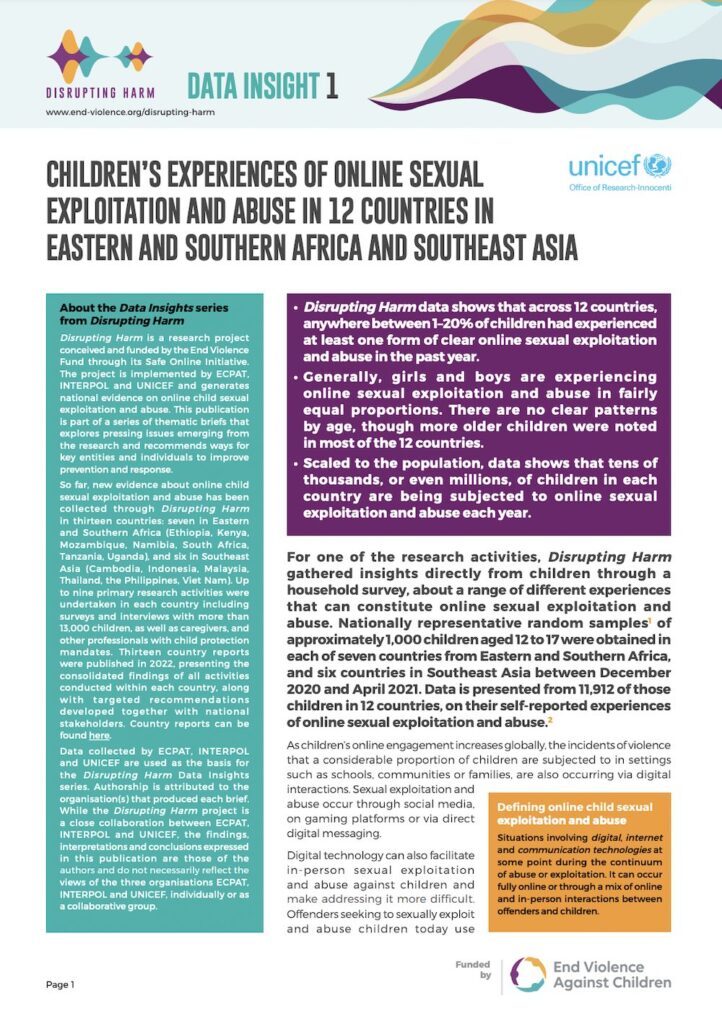
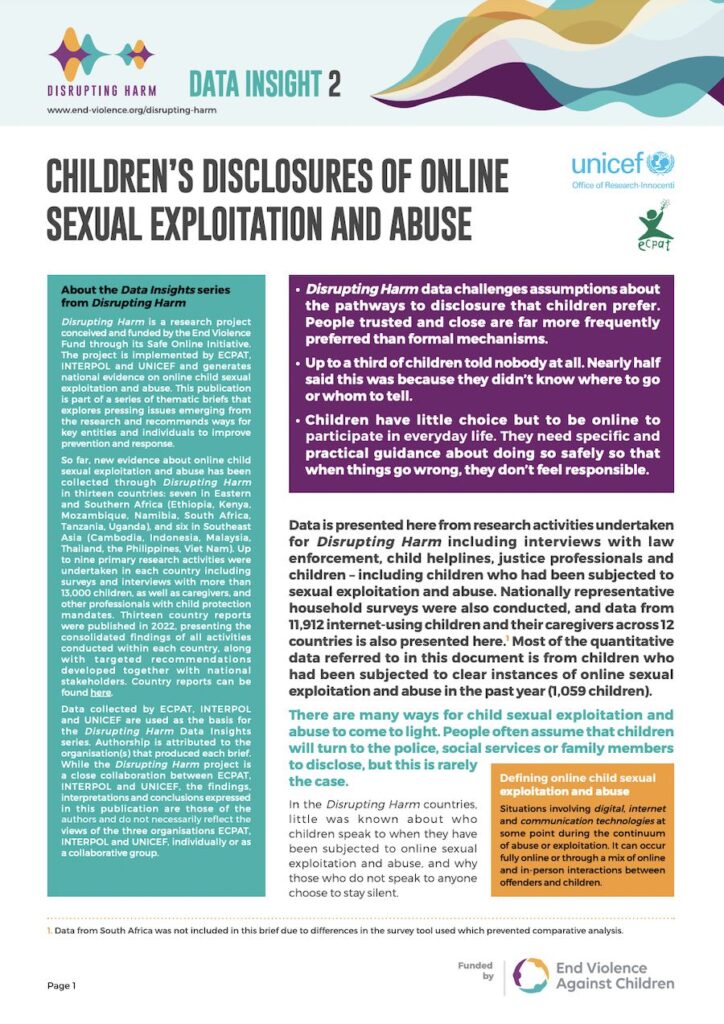
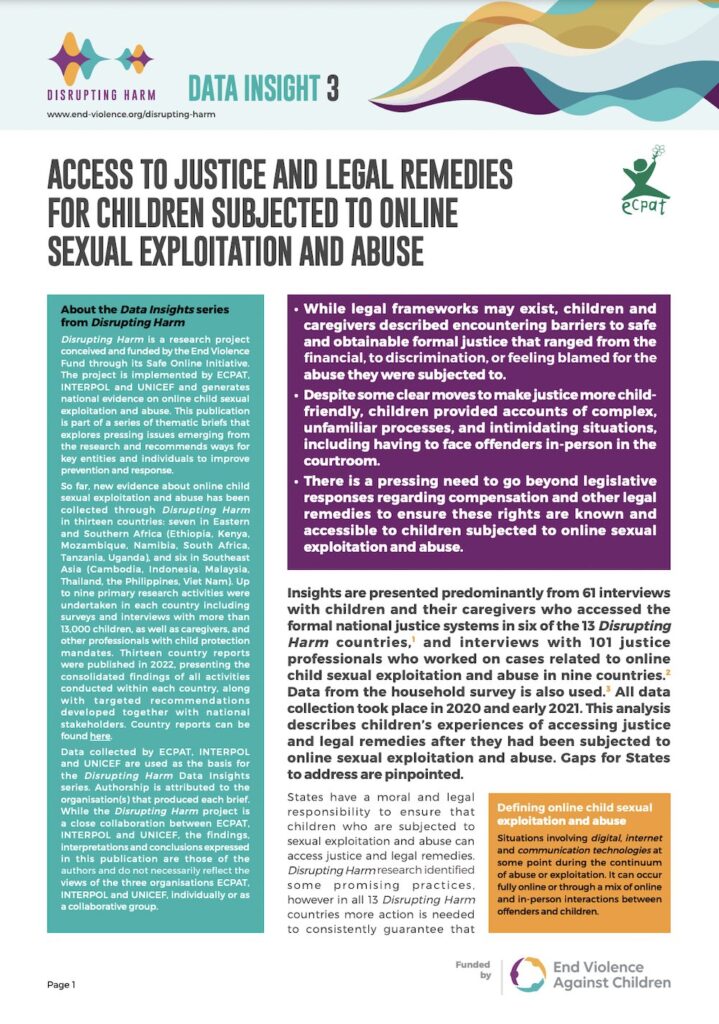
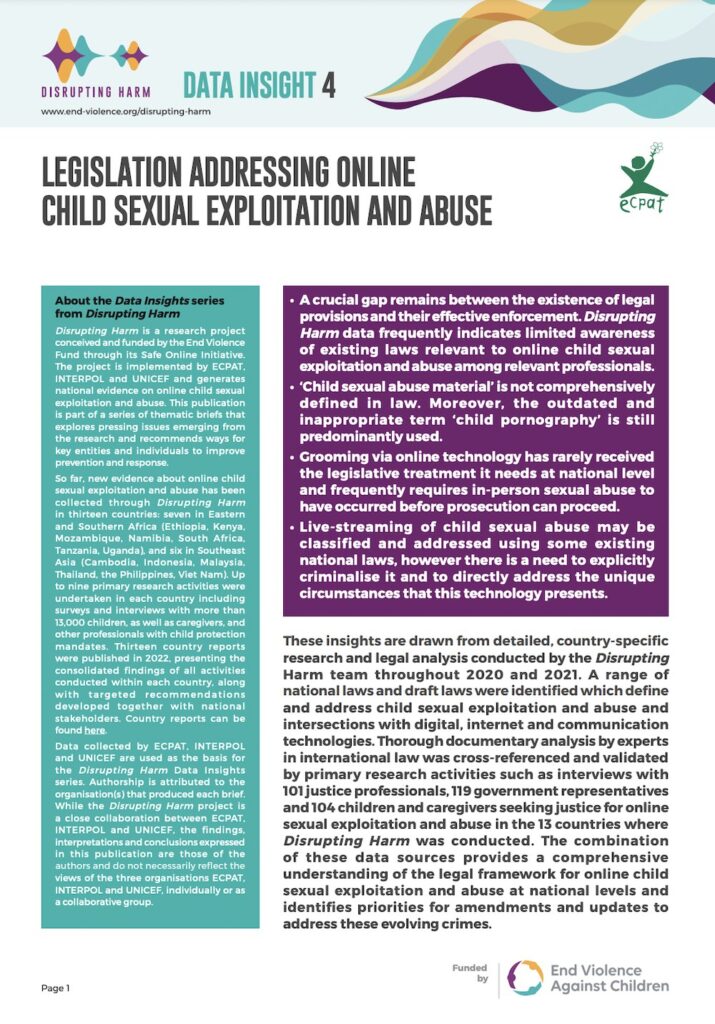
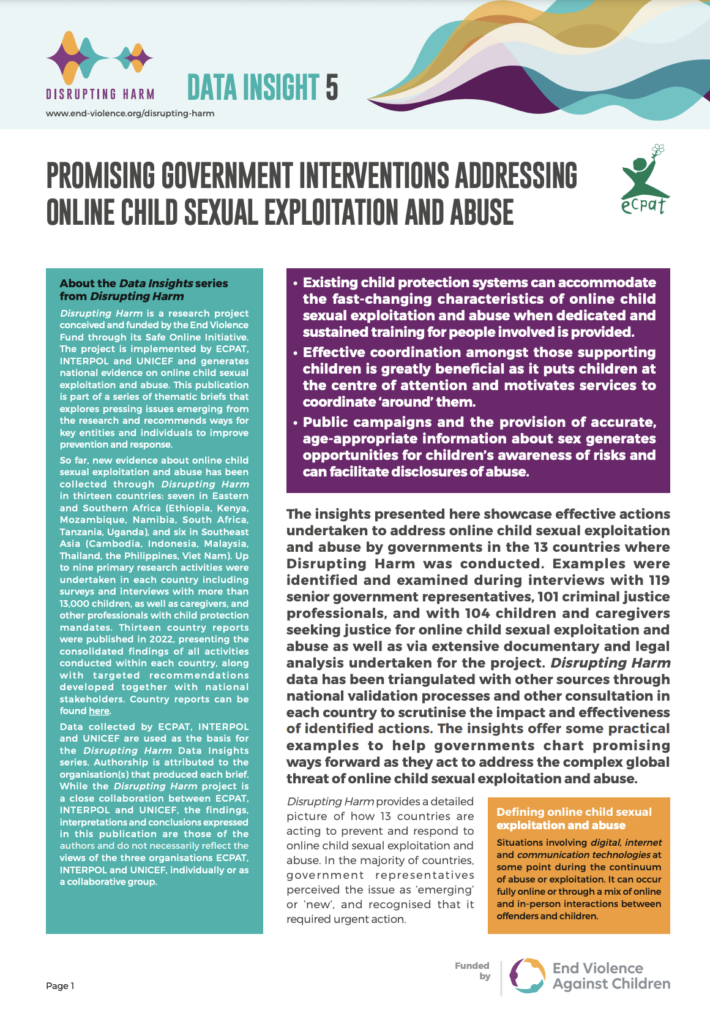
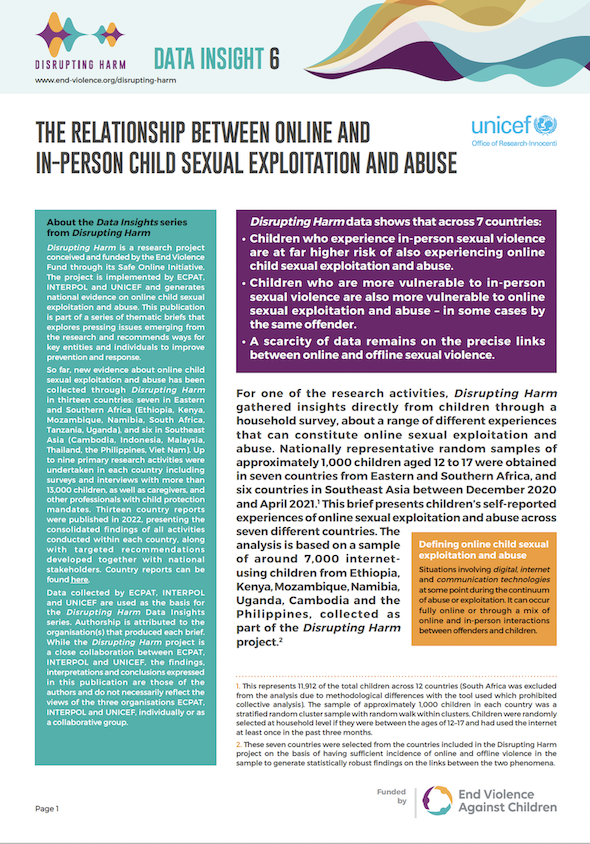
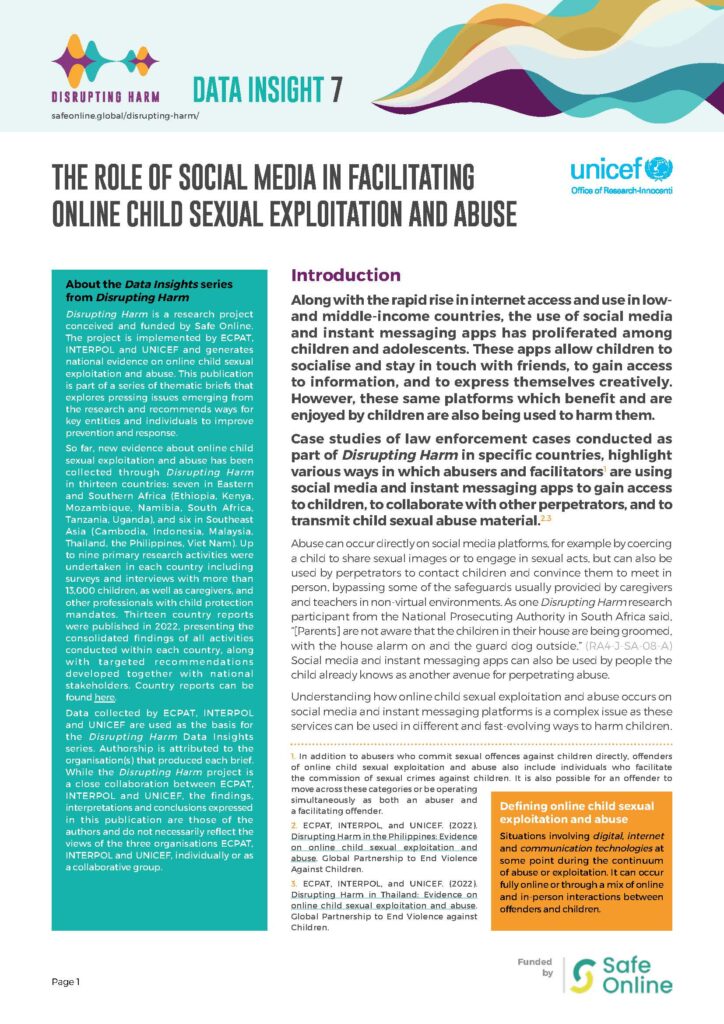
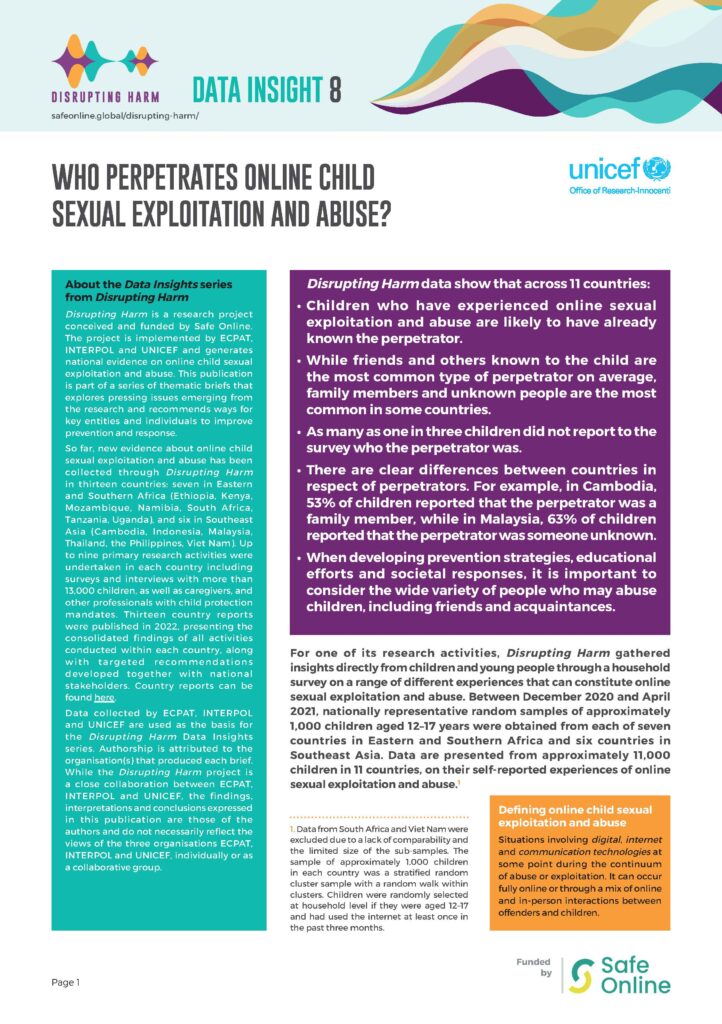
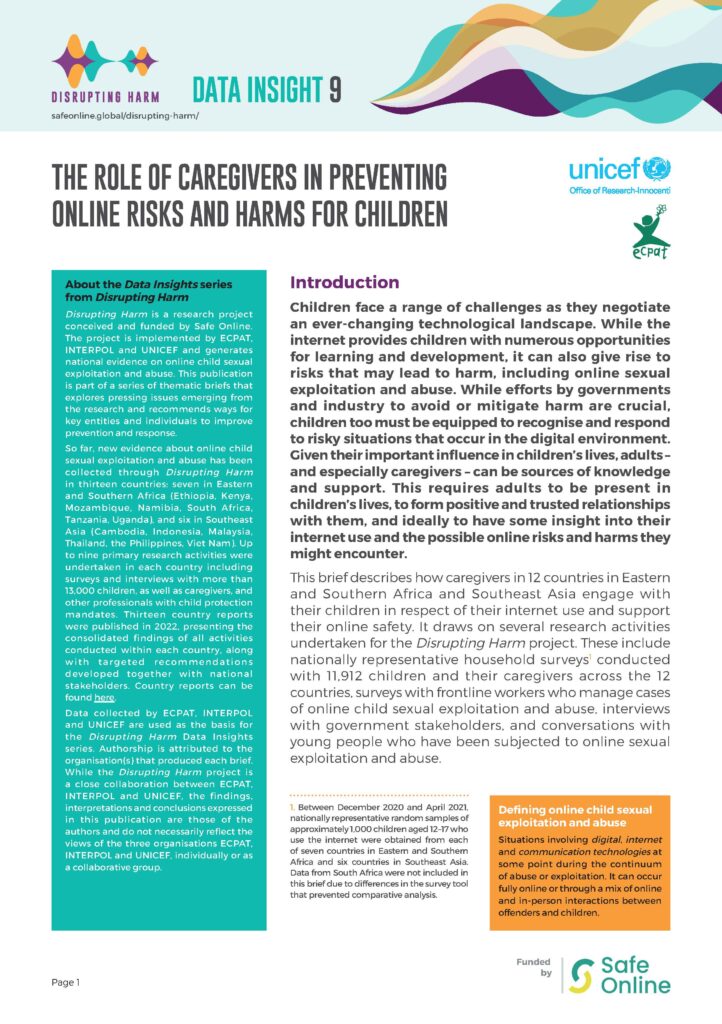
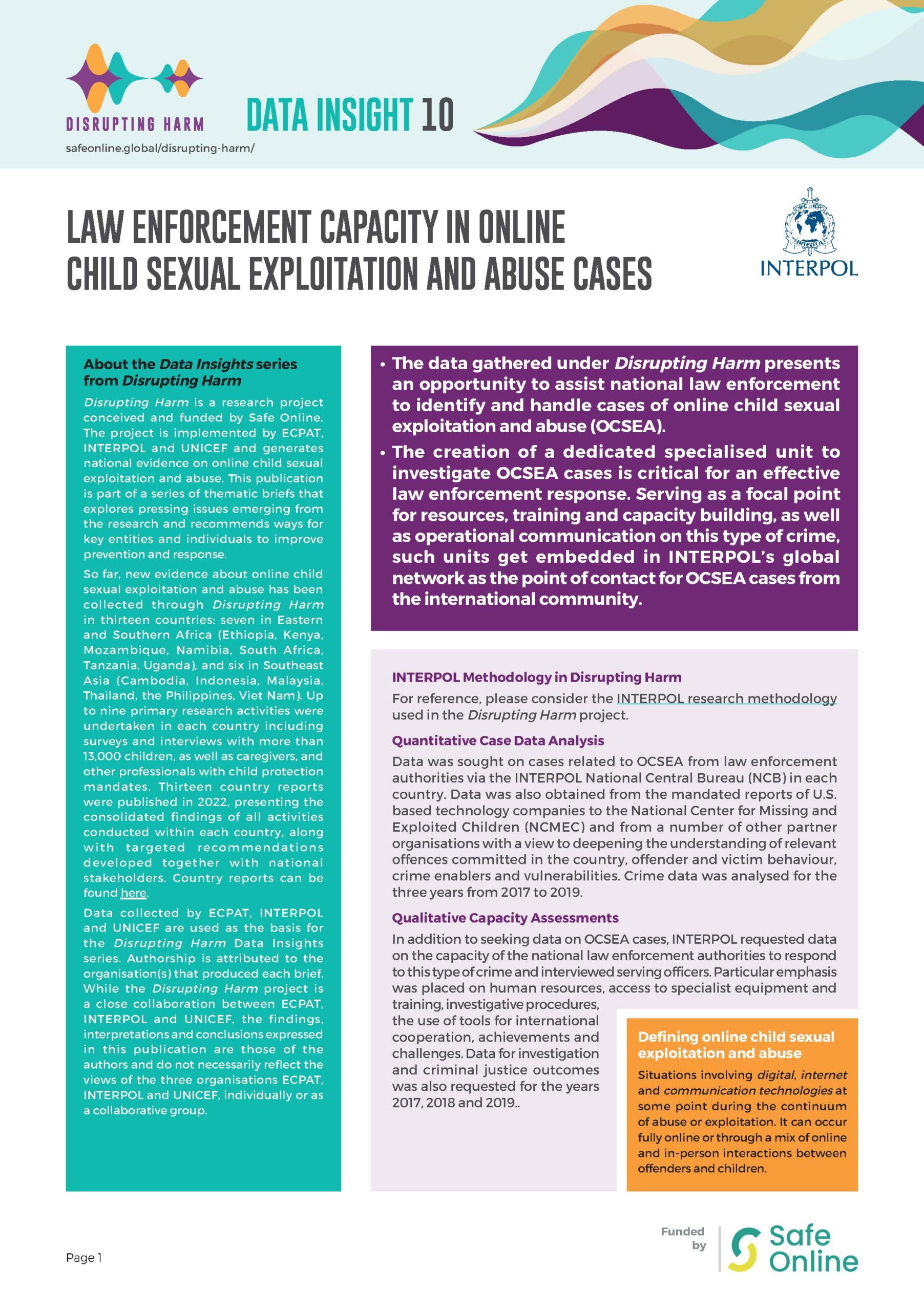
Leveraging the unique and comprehensive evidence gathered, Disrupting Harm identifies practical and actionable solutions to protect children from sexual abuse and exploitation (CSEA) both online and offline. The project was implemented in 13 countries across Eastern and Southern Africa. Below are reports that are now available: Cambodia, Ethiopia Indonesia, Kenya, Malaysia, Mozambique, Namibia, Philippines, South Africa, Tanzania, Thailand and Uganda.
Disrupting Harm in South Africa is the 13th in a series of reports which shares the findings of children’s perceptions of and participation in various online practices, as well as exposing their experiences of online CSEA in South Africa.
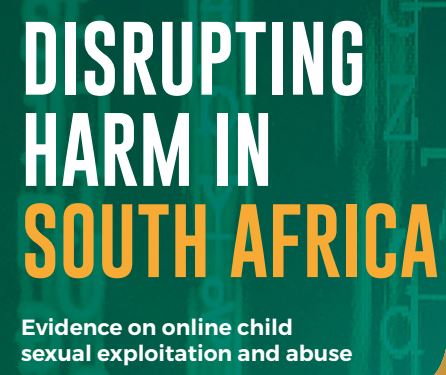
Disrupting Harm in South Africa has highlighted a number of key areas regarding online CSEA:
Extensive data collection took place in South Africa from early 2020 to early 2021. Data analysis for South Africa was finalised in April 2022.
To ensure cutting-edge results from this research endeavour, advice was sought from global experts on the Disrupting Harm in South Africa findings and recommendations. A list of the members of the Panel of Advisors can be found here.
Leveraging the unique and comprehensive evidence gathered, Disrupting Harm in South Africa identifies to protect children from sexual abuse and exploitation both online and offline in South Africa. The recommendations were discussed at national consultations on 21 June 2022.
ECPAT International – carried out 11 interviews with senior national duty-bearers; carried out a literature review prior to primary data collection which consisted of comprehensive analysis of the legislation, policy and systems addressing online CSEA in South Africa; carried out data collection from non-law enforcement stakeholders; carried out a survey with 49 client-facing frontline workers to explore the scope and context of online CSEA in South Africa; interviewed ten criminal justice professionals; and carried out one interview with a young survivor of online CSEA.
INTERPOL – collected and analysed both qualitative and quantitative data from national law enforcement agencies, relevant specialised units and partner organisations to measure the scope and nature of online CSEA; and conducted a qualitative assessment on the capacity of national law enforcement authorities to respond to online CSEA cases by interviewing serving officers.
UNICEF Office of Research – Innocenti – carried out a national representative household survey of 2,642 internet-using children aged 12–17 in South Africa. Additionally, 1,393 caregivers of the children surveyed were also included in the study.
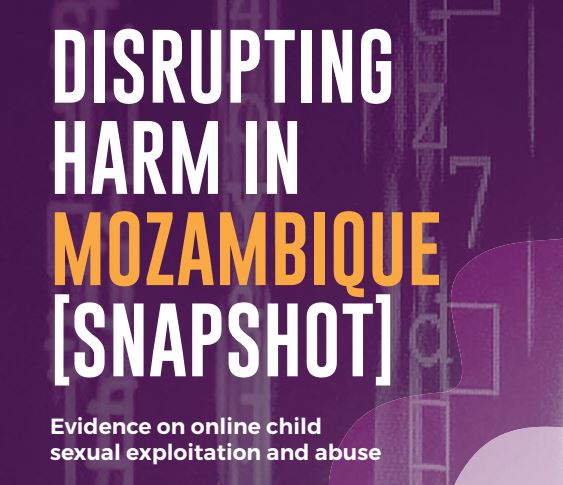
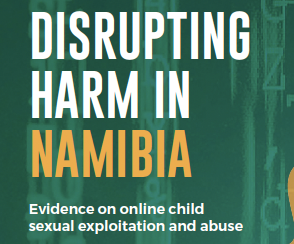
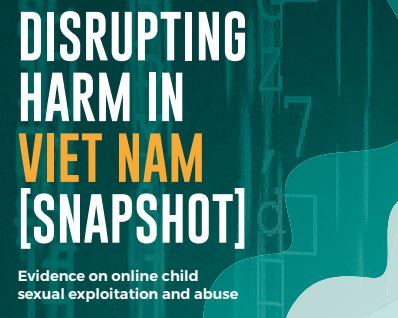

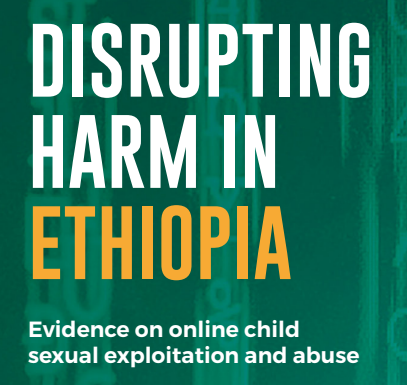
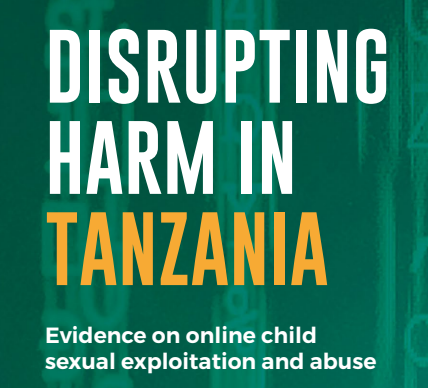
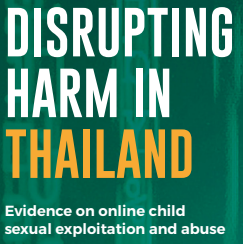
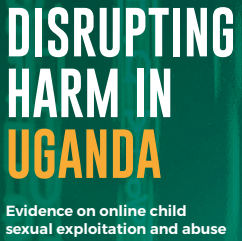
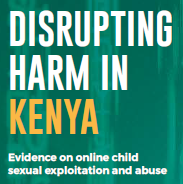
Disrupting Harm Partner Toolkits for Phase 1 were created to help partners amplify the work of Disrupting Harm, the first-ever research project of its kind.
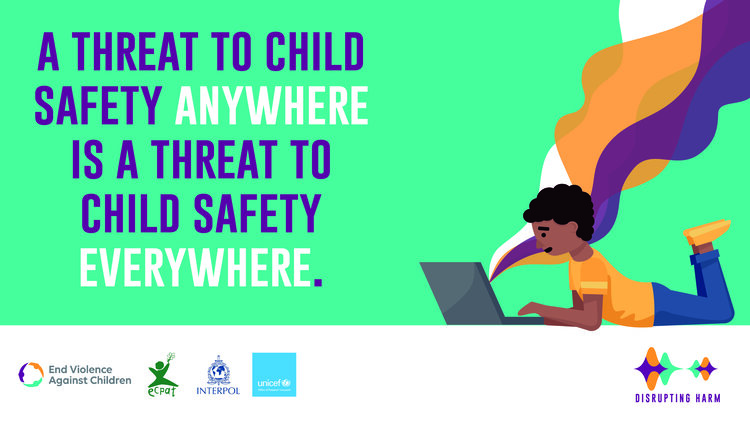
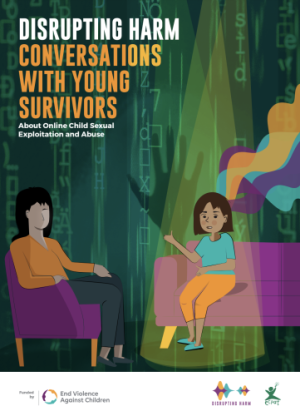
This report documents conversations with young people who had been subjected to online CSEA in Kenya, South Africa, Namibia, Malaysia and Cambodia, drawing out lessons to better address the issue.
Subscribe to our monthly newsletter to keep up-to-date on the latest progress, news, events and reports from Safe Online and the wider community working to end violence against children.
Copyright Safe Online 2023 ©
All imagery is taken from the UNICEF image library. It is not available in the public domain.
We are here to ensure every child and young person grows in to the digital world feeling safe, and is protected from harm.
We support, champion, and invest in innovative partners from the public, private, and third sectors working towards the same objective.
We believe in equipping guardians and young people with the skills to understand and see danger themselves once accessing digital experiences without supervision.